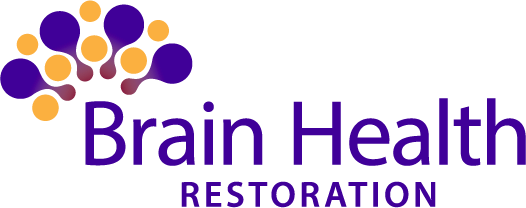Consistent hand washing is absolutely the right action with the COVID-19 a constant threat. Hyper-vigilance about disinfecting your cell phone, door handles, gas pumps, and shopping carts is a necessity to do our part in containing the virus.
To the 2.3% of the population suffering from Obsessive-Compulsive Disorder (OCD), constant thoughts and actions like these, along with the resulting anxieties are a normal day. Sure, we joke about the perfectionist sister, the ultra-organized friend, and the clean freak in the family being “OCD.” But when these habits and tendencies are involuntary responses and result in high stress and problems impacting the sufferer’s life, it is definitely a very serious matter.
1 “Obsessive-Compulsive Disorder.” National Institute of Mental Health. nimh.nih.gov/health/topics/obsessive-compulsive-disorder-ocd/index.shtml 2 “Obsessive-compulsive disorder.” Wikipedia. wikipedia.org/wiki/Obsessive–compulsive_disorder 3 “FDA permits marketing of transcranial magnetic stimulation for treatment of obsessive compulsive disorder.” 17 August 2018. Fda.gov. fda.gov/news-events/press-announcements/fda-permits-marketing-transcranial-magnetic-stimulation-treatment-obsessive-compulsive-disorder
What is Obsessive-Compulsive Disorder (OCD)?
According to the National Institute of Mental Health, OCD is “a common, chronic, and long-lasting disorder in which a person has uncontrollable, reoccurring thoughts (obsessions) and/or behaviors (compulsions) that he or she feels the urge to repeat over and over. Obsessions are repeated thoughts, urges or mental images causing anxiety. Common symptoms include aggressive thoughts towards self or others, having things symmetrical or in perfect order, fear of germs or contamination, unwanted forbidden or taboo thoughts involving sex, religion, or harm. When someone with OCD feels the urge to act on these obsessive thoughts, it becomes a compulsion. Behaviors like arranging and ordering things in a particular, precise way, repeatedly checking and double-checking things (i.e. door locks), compulsive counting and excessive hand washing or cleaning. OCD is generally diagnosed by the age of 19, and evenly among males and females but some cases do present over 35 years of age. Some additional behaviors commonly accompanying OCD can be tics, drug or alcohol addictions, anxiety disorders, body dysmorphia/anorexia/bulimia, ADHD, and compulsively picking the skin, nail-biting or pulling out hair.1 /2What Are the Risk Factors of OCD?
Research has suggested some abnormalities in certain parts of the brain and the development of OCD, but more research needs to be done. Genetics and childhood trauma have also shown some relationship too, but again, more studies and research need to be conducted.Available Treatments
Selective serotonin reuptake inhibitors (SRIs) are used to help reduce OCD symptoms. While more commonly used to treat depression, administering higher dosages have been found to be useful for patients with OCD, although it might take longer to take effect. If SRIs are not working, in some cases an antipsychotic might be recommended, although there are mixed results in terms of efficacy. Counseling, specifically Cognitive Behavioral Therapy (CBT), can be effective for children and adults and in people who maybe did not respond to SRIs or have adverse reactions to the prescription. Habit Reversal Training and Exposure and Response Prevention (EX/RP) are two specific psychotherapies shown to be effective. EX/RP utilizes time spent in a triggering situation or environment and then preventing the patient from undertaking the usual resulting compulsion. Like anxiety and depressive patients, some OCD sufferers experience treatment-resistance to medications or adverse side. In 2018, the FDA approved transcranial magnetic stimulation (TMS) as an adjunct in OCD treatment. In a randomized, 100 person, multi-clinic study, 49% of participants were treated with TMS and 51% were given a sham treatment. Using the Yale-Brown Obsessive-Compulsive Scale (YBOCS) score as a metric, 38% of the TMS study group decreased their YBOCS test scores by more than 30%. Only 11% of the sham group showed any improvement. 3Magnetic e-Resonance Therapy vs. Transcranial Magnetic Stimulation
MeRTSM offers the potential of individualized executive function optimization. The difference between MeRT and Transcranial Magnetic Simulation (TMS) is the application of a variable treatment frequency to precisely target the individual’s current brain wave patterns. MeRT uses three FDA approved technologies: Quantitative EEG Analysis, Transcranial Magnetic Stimulation, and the EKG analysis of an individual patient’s heart rate. These technologies are married through the intrinsic harmonic relationship between the primary synchronizer of the brain, the alpha rhythm, and the heart rate. The resultant frequency and coil location generated by MeRT provides an extremely precise and highly individualized treatment protocol. The importance of the individualized frequency and localization generated by MeRT cannot be overstated.Transcranial Magnetic Stimulation Experts
If you or anyone you know is suffering from the symptoms of OCD, please contact your family physician or mental health professional for further diagnosis or treatment. Brain Health Restoration clinic offers Magnetic e-Resonance Therapy (MeRT), a fully customized treatment protocol with expected benefits of better sleep, better concentration and focus, memory and reduced depression. To find out more or to see how MeRT might help you, please contact us here.1 “Obsessive-Compulsive Disorder.” National Institute of Mental Health. nimh.nih.gov/health/topics/obsessive-compulsive-disorder-ocd/index.shtml 2 “Obsessive-compulsive disorder.” Wikipedia. wikipedia.org/wiki/Obsessive–compulsive_disorder 3 “FDA permits marketing of transcranial magnetic stimulation for treatment of obsessive compulsive disorder.” 17 August 2018. Fda.gov. fda.gov/news-events/press-announcements/fda-permits-marketing-transcranial-magnetic-stimulation-treatment-obsessive-compulsive-disorder

